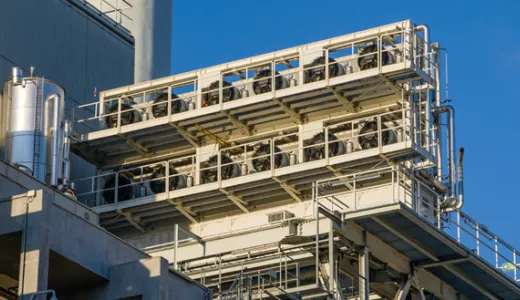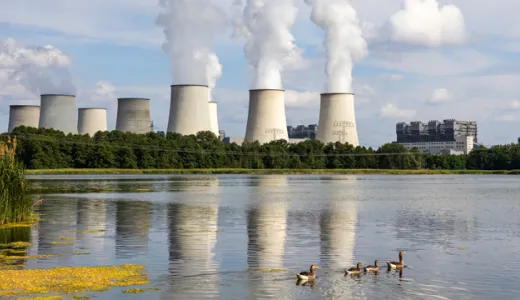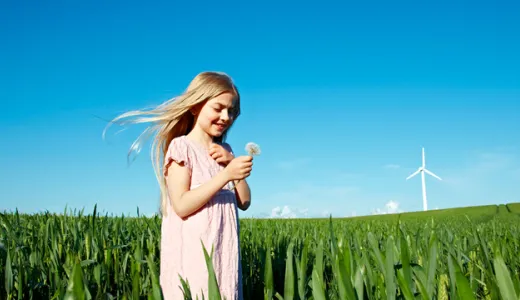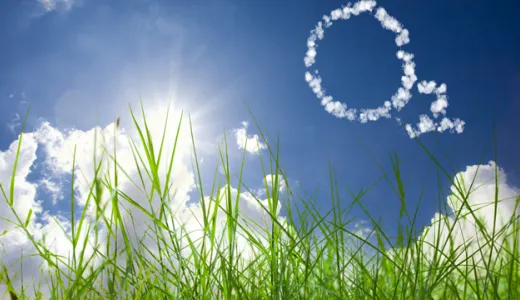Carbon capture technology and how it works
Technology that captures carbon dioxide from our atmosphere has existed for decades and is now being considered a key method for fighting climate change. So what does this technology look like and how does it work in practice?
Carbon capture and storage (CCS) technology is a form of carbon sequestration that’s set to play a central role in helping us reach net zero by 2050.
Existing strategies to tackle climate change focus mainly on eliminating the carbon emissions from processes such as power generation or transport; but CCS looks at how carbon dioxide (CO2) can be captured directly from the atmosphere, or at point of emission, and stored safely within the natural environment.
How does carbon capture technology work?
CCS takes two basic forms:
- Biological carbon capture and storage: when the natural environment – such as forests and oceans – sequesters CO2 from the atmosphere.
- Artificial / Geological carbon capture and storage: when CO2 as an emission is extracted from human-made processes and is stored in vast underground facilities.
Biological CCS happens on a much larger scale than geological CCS, but the technology to stimulate both has traditionally been viewed as expensive and unpractical at scale. This is changing, however, as investment and research into carbon capturing technologies takes off.
Types of carbon capture technology
1. Carbon sinks
Natural forms of CCS are called ‘carbon sinks’ and they are vast spaces where the natural habitats capture CO2 from the atmosphere – these include forests, oceans, grasslands and wetlands.
Scientists, as well as environmental and conservation experts, recognise that the preservation and cultivation of carbon sinks could increase the amount of carbon taken from our atmosphere in the shortest space of time.
Grasslands and wetlands in particular have a much quicker turnaround for carbon storage, with coastal wetlands storing more carbon per hectare than other habitats like forests.1

Where woodland is used, experts believe certain types of tree – such as birch or willow – are optimal for land-based carbon capture as they absorb more CO2 comparatively than other tree species.
Storing carbon dioxide in an ancient peat bog
One way we’re working to biologically capture carbon is by preserving and rehabilitating an ancient peat bog located close to one of our substations in South Wales.
The 15-hectare bog stores the equivalent of 32,000 tonnes of carbon dioxide, which is equal to the average annual emissions of 22,000 petrol cars. Restoring it has also provided conditions for rare butterflies and vegetation to flourish.
2. Saline aquifers
Deep saline aquifers are underground geological formations; vast expanses of porous, sedimentary rock, which are filled with salt water. CO2 can be injected into these and stored permanently – in fact, saline aquifers have the largest identified storage potential among all other forms of engineered CCS.
The ‘Endurance’ aquifer, located in the North Sea off the coast of the UK, is one such formation, which sits approximately 1 mile (1.6km) below the sea bed. Roughly the size of Manhattan Island and the height of The Shard or the Empire State Building, its porous composition allows for carbon dioxide to be injected into it and stored safely for potentially thousands of years.
In the US, multiple large-scale saline aquifers are now being used for CCS purposes, such as the Citronelle Project in Alabama. During its three-year trial period, it was successful in storing more than 150,000 tonnes of CO2 per year, which was captured from a nearby pilot facility.
3. Giant air filters
Carbon capture technologies are still being developed globally, with individual countries creating strategies that respond to their own net zero goals. For example, in China companies have developed experimental commercial air filters – huge towers that clean air of pollutants on a huge scale. These giant air towers purify air by drawing it into glass rooms, which are heated using solar power creating a greenhouse effect. This hot air up is pushed up the tower through a series of filters, before being released back into the atmosphere as clean air.
One such giant air-purifier tower in Xian has reportedly been cleaning more than 353 million cubic feet of air each day, dramatically improving local air quality. Manufacturers believe they are close to developing even larger towers, where just one could clean enough air on a daily basis for a small city.
4. Ionic liquids: a capturing carbon technology of the future?
The most recent advancements in CCS technology includes new types of liquids, which are highly effective at absorbing CO2. Two dimensional ‘ionic’ liquids have a molecular structure that allow for higher rates of CO2 to be absorbed. Scientists believe ‘editing’ liquids can offer more precise control in the chemical engineering process and are considered environmentally friendly.
Helping to 'grow' biological CCS
Planting trees or developing wetland areas are two of the simplest ways of stimulating CCS on huge scales, but there are often issues around land ownership and space. Governments, landowners and local communities all have a role to play in identifying opportunities for projects and collaboration.
In the UK, financial incentives in the form of Environmental Land Management schemes are offered to landowners and land managers who commit to managing their land in an environmentally sustainable way.
In the US, land reclamation for environmental purposes is similarly incentivised by the Department of Agricultural Farm Service Agency (FSA). Farmers can receive rental payments if they no longer develop on land or use it for agricultural purposes; allowing grasslands, uplands, wetlands and forests to flourish instead.
Businesses in the private sector are increasingly ‘offsetting’ the emissions they produce by funding carbon capture schemes. This is also known becoming carbon neutral through the purchase of ‘carbon credits’.
Microsoft, for example, has made its initial offset purchase through a $1 billion investment in Climeworks’ Orca CCS facility, located in Reykjavik. Climeworks opened the first commercial CCS facility in Switzerland in 2017, before opening the larger Orca site in 2021. It’s estimated that the Icelandic plant can capture up to 4,000 metric tonnes from the atmosphere annually.
Last updated: 26 Mar 2024
The information in this article is intended as a factual explainer and does not necessarily reflect National Grid's strategic direction or current business activities.



